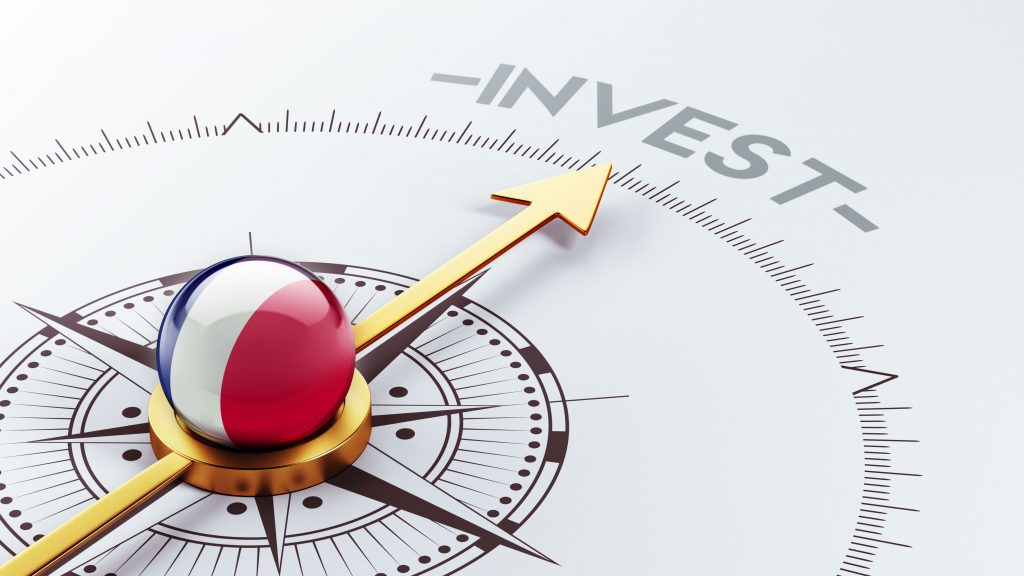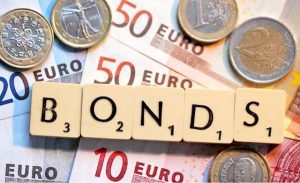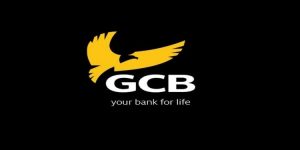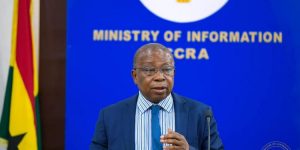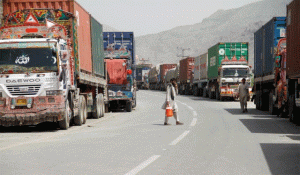Data released by the Ghana Investment Promotion Centre last week reveal that the country continues to defy downward global trends with regards to foreign direct investment inflows.
The FDI amount of US$ 829.29 million was a remarkable increase of 32.15 percent in inbound FDI compared to the FDI value of US$ 627.52 million recorded in the same period last year. However, the way in which the inflows built up this year contrasts with last year. In 2020 the inflows began slowly and only a sudden sharp increase in June enabled Ghana to cross the US$600 million mark by mid-year. In contrast, Ghana got off to a flying start this year, attracting US$500 million during the first two months of the year before the inflows petered down somewhat towards the middle of the year.
No matter. Ghana’s mid-year position creates the real possibility that the full year FDI inflows will exceed the US$1.6 billion achieved last year. Indeed, considering the sheer intensity of the FDI marketing drive currently being embarked on by top government functionaries – led by President Nana Akufo-Addo himself – coupled with the elimination of socio-economic restrictions in the western hemisphere countries that provide most of the foreign private investment capital received by Ghana, due to mass COVID 19 vaccination programmes, there is the strong likelihood that the second half of the year will see far more FDI inflows into Ghana than the first half of the year.
This strong FDI performance in the first half of the year was driven by success in key sectors including the services sector with 63 projects at an estimated value of US$ 597.63 million, the manufacturing sector with 24 projects at a value of US$98.74 million, as well as general trading and Building and construction with FDI values of US$41.87 million and US$22.63 million respectively. Investments registered in the oil, gas and petroleum products sector attracted US$64.36 million, while agriculture, disappointingly attracted just US$1.20 million.
With operations at full capacity, the projects registered so far, have the potential to generate 8,931 jobs, thereby improving aggregate employment. According to GIPC data, 8,091 (90.59 percent) of these positions will be for Ghanaians, while the remaining 840 (9.41 percent) will be for non-Ghanaians.
Ghana’s largest investment partners for the period were Singapore with US$307.50 million, Australia withUS$204.01 million, India with US$61.57 million and the Netherlands bringing in US$46.80 million. Both the United States and China also made large investments.
With respect to the distribution of projects, nine regions gained from the dispersion of the 122 projects. The Greater Accra area, as usual, again clearly surpassed all other regions, with 96 projects, accounting for 78.69 percent of all projects registered in the first half of the year. The other regions to have recorded projects are the Ashanti and Western regions with 8 and 9 projects respectively, Bono, Central and Eastern regions with two (2) projects each, whilst Ahafo, Northern and Upper West regions each attracted one project respectively.
Ghana’s attractiveness as an investment destination has proved resilient amid the COVID-19 pandemic, with the country raking in 874.01 million dollars’ worth of investments from 122 projects in the first half of 2021.Of the total investment of US$874.01 million, The Foreign Direct Investment (FDI) component amounted to US$829.29 million while the local component accounted for US$44.72 million
While Ghana’s steady half year performance implies a sustained confidence in the Ghanaian economy by foreign investors, it is also worth noting that, within the first half of 2021, a total of 27 completely Ghanaian-owned projects with an estimated value of US$669.64 million were registered while existing companies contributed a total of US$11.56 million in extra equity, in the forms of both cash and goods. These projects are spread across agriculture, building and construction, general trading, manufacturing and services.
This is crucial in several ways. Wholly Ghanaian owned investment projects are not required by law to be registered with the GIPC but are encourage to do so, not just because it enables more accurate accurate tracking of investment mobilization across the country, but even more importantly because it thus allows such fully indigenously owned enterprises to benefit from some of the generous investment incentives that are customarily offered the wholly or partly foreign owned counterparts. Such incentives include tax relief and other fiscal incentives, as well as both pre and after investment services delivered by GIPC which, among other things, guide investors through the process of acquiring land, importing machinery and securing the plethora of requisite licenses and permits.
Importantly, wholly Ghanaian owned investments tend to be spread across a more diverse geographical spread of regions that foreign owned enterprises that tend to locate in the biggest urban centres, particularly Accra itself. In turn, this attitude of foreign investors similarly tends to restrict the types of economic activity they invest in; for instance they tend to shy away from farming which requires large swathes of land in rural hinterlands.
Consequently, the inclusion of wholly Ghanaian investments in GIPC‘s data gives a more accurate – and more encouraging – picture of total investment mobilization and deployment across the Ghanaian economy.
Increasing FDI investment inflows into Ghana are worthy of applause, since they buck global trends. The United Nations Conference on Trade and Development, UNCTAD, reckons that in 2020, global FDI shrank by about one third compared with the quantum for the previous year, as COVID 19 played havoc on the global economy. In contrast though, FDI inflows into Ghana increased by 139 percent last year to reach US$2.65 billion, bettered on the African continent as a whole only by Egypt, and matched only by Nigeria which incidentally has an economy several times the size of Ghana’s.
Nonetheless, the United Nations Conference on Trade and Development (UNCTAD), observes that the COVID-19 pandemic has had a significant impact on global FDI flows, as global FDI decreased by a third to $1 trillion in 2020, considerably below the ten-year trough experienced during the global financial crisis. However, UNCTAD anticipates that Global FDI flows are likely to recover some ground in 2021, with a 10 to 15% growth. But the pace of economic recovery and the probability of pandemic relapses, as well as the possible impact of recovery spending packages on FDI and policy pressures, are all elements that will influence investment prospects
As the nation’s lead Investment Promotion Agency, the Ghana Investment Promotion Center remains optimistic about maintaining the upbeat performance while moving forward in a new and innovative way.
This the Center hopes to achieve by reviving international investment as a conduit for economic growth through aggressive engagement with the international investor community and the organization of the first Annual investment summit dubbed “Spark up 2021”.
Furthermore, attracting investments under the Ghana Covid 19 Alleviation and Revitalization of Enterprises (CARES) initiative will continue to be a priority to the GIPC in order to guarantee that Ghana’s economic recovery is inclusive, with benefits flowing to all sectors of the economy.
But even as GIPC’s chieftains deservedly celebrate Ghana’s extraordinary feat last year – and a possible repeat again this year – they are acutely aware that improvements are required in several aspects.
One is with regards to spatial spread. Ever since Ghana first introduced its current investment code regime more than three and a half decades ago, FDI has been focused on the main urban centres, particularly Greater Accra and Greater Accra which between them have accounted for nearly 90 percent of the foreign owned enterprises established since then. While the Western part of the country has been receiving more FDI than hitherto over the past decade since the commencement of production from the newly discovered offshore oil and gas fields, the spatial distribution remains heavily lopsided.
Actually the one district one factory initiative was supposed to correct this phenomenon but it has not. Yofi Grant, GIPC’s CEO observes that most of the investment being churned up by the IDIF programme is primarily indigenous capital.
Indeed this explains in part why the wholly owned Ghanaian enterprise investment capital has risen recently, in fact challenging the quantum of foreign private investment capital inflows in recent times. However both GIPC and government itself are determined to increase the quantum of FDI flowing into the country’s rural hinterlands, particularly through the 1D1F initiative.
GIPC’s nationwide road shows have convinced local investors and entrepreneurs to invest in the hinterlands’ now it is looking to do the same with the international investment community. One strategy here has been to engage the economic counsellors of the embassies of foreign countries in Ghana.
As key stakeholders of the Ghana COVID-19 Alleviation and Revitalization of Enterprises Support (CARES) Program, the GIPC held the Economic Counsellors Dialogue (ECD) on 1st June, 2021, to indulge the diplomatic community on the initiative.
The discussions highlighted steps taken to improve the ease of doing business in the country amid the pandemic, and the opportunities presented by the Ghana CARES Program, which the private sector can leverage.
The event saw a gathering of economic counsellors from the various trade missions in Ghana, as well as representatives from government agencies such as the Ghana Revenue Authority (GRA), and the Ghana Immigration Service (GIS).
Related to this is the desire to increase private investment in the agricultural value chain, from farming to agro-processing. Not only does the agricultural sector have the best potential for spreading private investment all around the country, it also holds the best promise for creating the most new work opportunities.
Consequently GIPC has been emphasizing investment opportunities in the agriculture and agro-processing sector to potential foreign investors.
Ghana’s agriculture sector plays a crucial role in the nation’s development. The World Bank Group valued Ghana’s agricultural sector to be US$12.169 billion in 2019
The sector retains a position as a top employer, absorbing about 44.7 % of the nation’s labor force. As of 2019, the sector’s contribution to GDP stood at 17.3% with an annual average growth rate of 5.2% between 2017-2020.
To be sure, the export of cocoa and cocoa products is among the highest export revenue earning commodities in Ghana with the Bank of Ghana recording 2.29 billion dollars as earnings from the export of cocoa and cocoa products in 2019.
Other non-traditional tree crops such as Cashew, coffee and Shea nut also generate millions in revenue, while staple crops grown in the country include maize, millet, rice, sorghum, cassava, cocoyam, plantain, yam, plantain, groundnut, soya beans and cowpea.
The livestock and fisheries sub sector are all vibrant parts of the Ghanaian agriculture sector.
Between 2017 to 2020 the Government has invested about GHC1.9 billion into the sector under its flagship planting for Food and Jobs initiative aimed at increasing productivity and modernizing the agricultural sector by providing inputs, improving infrastructure, and strengthening the market structure for the sector.
Taking governments persistent investments into the sector with the aim of attaining self-sufficiency, this sector holds immense opportunities for investment in agric-technology such as greenhouse farming, logistic and infrastructure provision, irrigation schemes, agro-processing as well as marketing.
Ghana is the second largest cocoa produced after neighbouring Cote d’ Ivoire and government is seeking to leverage on this to attract the financing for a full blown value chain. On 27th May, 2021, GIPC held a Cocoa Value Chain Investment Meeting, at the Accra Marriot Hotel, to stimulate discussions on several exciting prospects of the
country’s cocoa industry.
Under the theme “Ghana’s Brown Gold: Sustaining Investments & Leveraging AfCFTA”, the event highlighted the opportunities along the cocoa value chain that can be leveraged by investors. It also sensitized industry players on beneficial business arrangements provided by the African Continental Free Trade Agreement which can facilitate business activities.
Along with key stakeholders such as Ghana Cocoa Board (COCOBOD), Cocoa Research Institute of Ghana (CRIG), and Ghana Cocoa Coffee and Sheanut Farmers Association, deliberations bordered on the current policy interventions being rolled out by government to foster growth of the sector, and how further the area can be improved.
There are early signs that GIPC’s efforts in regard to agriculture are being to pay off despite the dismal FDI inflow statistics regarding investment into the sector.
For instance one of the best appreciated recent FDI projects in Ghana is that by Casa De Ropa which has established a facility at Gomoa Bewadze that was commissioned in August last year. The company processes food without using refined sugar, using sweet potatoes instead. It processes 7,000 metric tonnes of sweet potatoes per annum which are cultivated at its three large farms which use three dams for all year round irrigation) The company has already established three restaurants – at University of Cape Coast, University of Education Winneba and University of Professional Studies Accra – and intends to establish similar eateries in every tertiary institution in Ghana.
Enterprises such as these are marketing Ghana’s agricultural sector in particular to the rest of the world. Hopefully it will provide the foundation for much bigger inflows to come.

